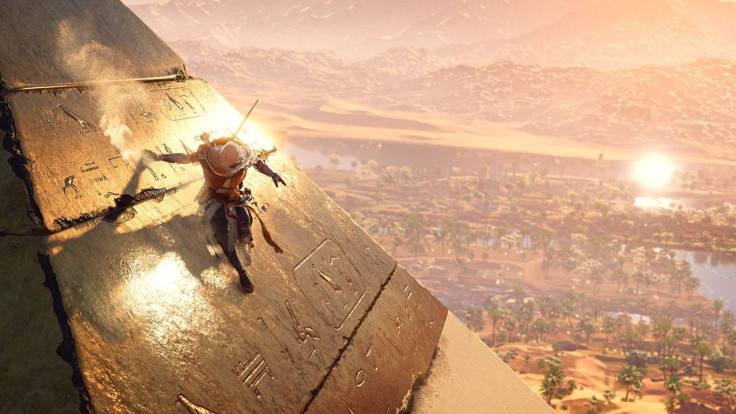Assassin's Creed Origins: Hieroglyphs In Promotions Contain Throwback References

Assassin’s Creed, Ubisoft flagship action-adventure video game series, is celebrating 10 years since it first hit stores. Altair, Ezio and their assassin friends — the game characters — have taken us through important focal points in history like the Italian Renaissance and American Revolution.
The latest installment, Assassin ’s Creed Origins, marks the nineteenth game of this franchise including all spin-off series. A new live-action trailer for this much-awaited game was released Monday, along with a live-action trailer launch for another action behemoth, Call of Duty: WW2.
The game hits the shelves after a one-year break between titles and this gap has heightened expectations among hard-core Assassin's Creed fans.
Creative Director of Assassin ’s Creed Origins, Jean Guesdon, in a report by Telegraph, said the one-year gap between games was needed “to really reinvent the experience of Assassin's Creed on both gameplay and the world.” The focus of this game is on “Bayek of Siwa and Ancient Egypt. This will deal with the birth of the brotherhood, a concept that has been around since the inception of the series,” he added.
The game is set in 49 BC when Cleopatra was forced to leave her throne. You play as the last Medjay, who must reinstate Cleopatra and fight the Order of the Ancients, described as “proto-Templars."
After the launch of the live-action trailer, an outpour of reactions was expected. But an Assassins Creed fan and Egypt scholar went a step ahead and froze the fleeting images of hieroglyphs that were seen in the trailer. She ended up decoding the message behind the images.
Alright. It's been a long night, but I think I've figured out what the part of the first column says. pic.twitter.com/jCXeCgBzay
— claire “look at this rock i found” manning (@Clazzaranius) October 15, 2017
According to a report on gaming website Polygon, this is interesting because nobody expects in-game hieroglyphs to hold any true meaning. It is usually a mish-mash of Egyptian symbols thrown together and we usually find the canine-faced Anubis, Cleopatra or just a group of groovy Egyptians, doing the famous ‘Egyptian Twist. ’
Assuming we interpret the intention as "Everything may be" rather than allowed/permitted, this makes sense. "Everything is possible" pic.twitter.com/LbGUzoIXFf
— claire “look at this rock i found” manning (@Clazzaranius) October 16, 2017
The report said the pictures contain the phrase, “Everything may be,” which easily fits the Assassin’s creed maxim: "Nothing is true; everything is permitted." Several instances of throw-back dialogues from the series like “We work in the dark, to serve the light, ” were found by the Egyptian scholar. Die-hard fans would remember this as the line added to the creed maxim by Ezio in Assassin’s Creed 2.
These translations generated buzz over the weekend. Several people were fascinated with the attention paid to the background details in the game.
The translations came after a promotional video made by Ubisoft showed a picture of hieroglyphs. The video was made to showcase the machine-learning initiative ability, which has been implemented in this game. The machine-learning initiative has been developed in association with Google. It helped the team translate hieroglyphs and add the fascinating level of detail to the game.
Assassins Creed Origins comes out Oct. 27, a day that would also see the launch of Wolfenstein 2: The New Colossus developed by Bethesda Softworks and Super Mario Odyssey.
© Copyright IBTimes 2024. All rights reserved.





















